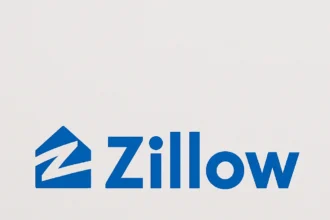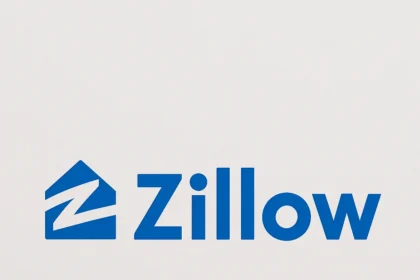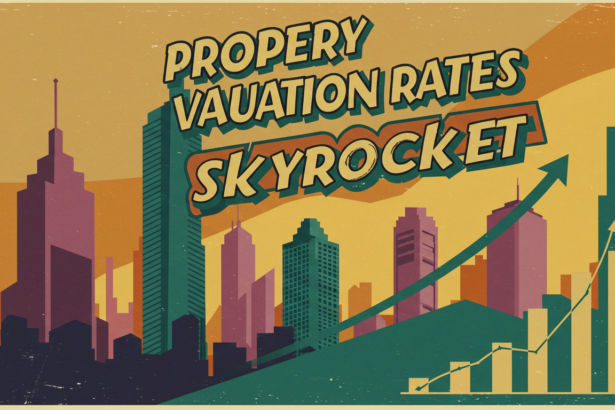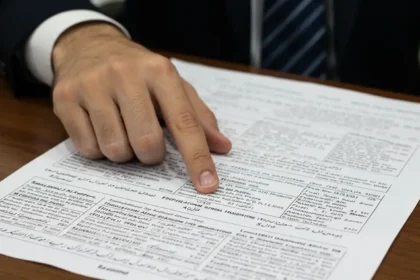Major Government Announcement on Property Tax Reforms
Government Unveils Plans for New Property Tax System The government of Pakistan has just announced a significant overhaul of the current property tax structure. These…
Let's Connect
Featured Stories
The Ultimate Guide to Buying Land in Pakistan: Dos and Don’ts
Buying land in Pakistan can be a lucrative investment, but it's also a complex process with potential pitfalls. This guide provides a comprehensive overview of…
Big Relief for Homeowners: Punjab Exempts Smaller Properties from Tax
The Announcement The real estate landscape in Punjab just shifted, with a significant announcement bringing…
UAE-Based Developer Announces $300 Million Investment in Pakistan’s Real Estate Sector
In a significant boost to Pakistan's real estate market, Reportage Properties, a leading real estate…
If Your Home’s on Zillow, This Might Be the Most Important Thing You Read Today
You’ve hit “Publish” on Zillow. You nervously refreshed your inbox. You told yourself, “Any day…
Major Government Announcement on Property Tax Reforms
Government Unveils Plans for New Property Tax System The government of Pakistan has just announced…
Sindh’s Housing Crackdown: What Does it Mean for Pakistan’s Real Estate?
Introduction While the Pakistani real estate market is always in motion, a significant development in…
Why Isn’t Your Zillow Listing Getting Offers? Uncover the Hidden Reasons
You've taken the significant step of listing your home on Zillow, anticipating a swift sale.…
Pakistan Real Estate: Property Valuation Rates Skyrocket – Brace Yourselves!
The real estate landscape in Pakistan is shifting once again, and this time, the change…
Buying Property in Pakistan: Essential Advice for Making the Right Decision
Buying property is one of the most significant financial decisions you will make in your life. In Pakistan, where the real estate market is thriving…
Why Isn’t Your Zillow Listing Getting Offers? Uncover the Hidden Reasons
You've taken the significant step of listing your home on Zillow, anticipating a swift sale.…
If Your Home’s on Zillow, This Might Be the Most Important Thing You Read Today
You’ve hit “Publish” on Zillow. You nervously refreshed your inbox. You told yourself, “Any day…
CDA Chairman Takes Action on Water Filtration & Sewage in Islamabad
In a move that could significantly impact the quality of life and real estate market…
Keeping You in the Now
Research
UAE-Based Developer Announces $300 Million Investment in Pakistan’s Real Estate Sector
In a significant boost to Pakistan's real estate market, Reportage Properties, a leading real estate developer from the United Arab Emirates, has entered into a…
CDA Chairman Takes Action on Water Filtration & Sewage in Islamabad
In a move that could significantly impact the quality of life and real estate market…
Why Isn’t Your Zillow Listing Getting Offers? Uncover the Hidden Reasons
You've taken the significant step of listing your home on Zillow, anticipating a swift sale.…
The Ultimate Guide to Buying Land in Pakistan: Dos and Don’ts
Buying land in Pakistan can be a lucrative investment, but it's also a complex process…
Choosing the Perfect Location for Your Property in Pakistan
Choosing the perfect location for your property in Pakistan is a crucial decision that can…
Why Isn’t Your Zillow Listing Getting Offers? Uncover the Hidden Reasons
You've taken the significant step of listing your home on Zillow, anticipating…
If Your Home’s on Zillow, This Might Be the Most Important Thing You Read Today
You’ve hit “Publish” on Zillow. You nervously refreshed your inbox. You told…
Decoding the 2025 Tax Reforms: Pakistan Real Estate Braces for Impact
Pakistan's real estate sector is no stranger to fluctuations, and the recently…
The Ultimate Guide to Buying Land in Pakistan: Dos and Don’ts
Buying land in Pakistan can be a lucrative investment, but it's also…
Big Relief for Homeowners: Punjab Exempts Smaller Properties from Tax
The Announcement The real estate landscape in Punjab just shifted, with a…
Punjab’s Property Tax Reforms: A Boost for Affordable Housing?
The real estate landscape in Punjab, Pakistan, is poised for a potential…
Choosing the Perfect Location for Your Property in Pakistan
Choosing the perfect location for your property in Pakistan is a crucial…
Rawalpindi Development Authority Cracks Down on Illegal Housing Scheme: What it Means for the Real Estate Market
The Rawalpindi Development Authority (RDA) has recently issued a notice to an…























